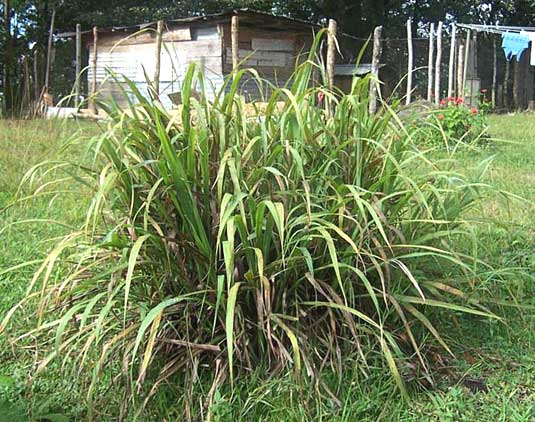From Jim Conrad's Naturalist Newsletter of October 22, 2007 Newsletter issued from Yerba Buena Clinic just outside Pueblo Nuevo Solistahuacan, Chiapas, MÉXICO
about 1740 meters in elevation, ± LAT. 17° 11' 27"N, LONG. -92° 53' 35"W
LEMON GRASS
Most mornings begin with a steamy mug of campfire ennobled Lemon-Grass tea. I get Lemon Grass leaves from the plant standing in front of Inés's henhouse, shown below:

It's amazing how good a mug of that tea tastes on a chilly morning, and just as amazing that in the North so few people bother with it. It's very commonly grown throughout Mexico. The species' original homeland isn't known because now it's found only under cultivation.
Lemon Grass is a real grass, meaning that it's a member of the Grass Family, the Poaceae. It looks just like a big, weedy clump of roadside fescue up North. It belongs to the genus CYMBOPOGON and is closely related to the broomsedge that so often occupies abandoned fields in eastern North America. About 40 species of Cymbopogon are known and many yield fragrant oils.
Actually, there's a Lemon Grass and a Citronella Grass and I'm only guessing that what I'm drinking here is Lemon Grass, CYMBOPOGON CITRATUS. Citronella Grass is CYMBOPOGON NARDUS. I'd need to see the flowers to distinguish them and my plant has no flowers.
In southwestern Mississippi I've seen Lemon Grass survive several years without attention. Some I planted in Kentucky endured two winters with my covering them with tree leaves before frost, but then a bad cold snap on the third winter came and killed it off.
This is such a fine plant, however, that in northern climes it deserves to be dug up and kept inside through the winter, then replanted after spring's last frost.